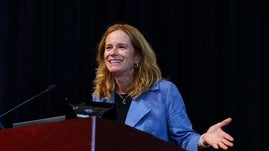
Route 146’s warehouse boom
 Image | Courtesy of Cohen Partners
A rendering of the 1-million-square-foot Unified2 Global Packaging Group facility in Sutton
Image | Courtesy of Cohen Partners
A rendering of the 1-million-square-foot Unified2 Global Packaging Group facility in Sutton
When it comes to building new warehouse space in Massachusetts, the Blackstone Valley, despite its legendary status as the birthplace of the American Industrial Revolution, tends to get overlooked.
But thanks to infrastructure improvements, changes in consumer behavior, and the vast availability of land, that is starting to change.
Several large industrial projects have joined the Route 146 corridor over the last several years. RP Masiello of Boylston is building two buildings in Sutton, totaliÅng 1 million square feet, for Unified2 Global Packaging Group. The 640,000-square-foot Blackstone Logistics Center in Sutton, Uxbridge, and Douglas is in the works.

In Douglas, ground has already been broken on a new 1.1-million-square-foot facility called The Cubes at Gilboa, which promises to be one of the largest speculative industrial warehouse projects in the entire commonwealth.
Jeannie Hebert, president and CEO of the Blackstone Valley Chamber of Commerce, said the hard work local stakeholders have been putting in for years is finally starting to pay off.

“It looks like 146 is the new I-495,” Hebert said.
Not a lot of space, historically
The Boston office of international real estate services company Colliers analyzes real estate in Greater Boston on a quarterly basis. The firm releases reports and data several times a year on various real estate markets, including office, industrial, commercial, multifamily, healthcare, and life sciences.
Traditionally, Colliers hasn’t tracked the Blackstone Valley as a group, research director Jeffrey Myers said. The area just hasn’t produced enough industrial activity to put a dent in the overall market, compared to Route 128 South or Boston, Cambridge, and the inner suburbs.
That is starting to change, Myers said.
Developers have found it’s easier to get several acres in areas like the Blackstone Valley because there’s so much available land, compared to areas closer to the city.
“As demand for large distribution properties has increased in Massachusetts in recent years, the Blackstone Valley has certainly found itself on developers’ radar screens,” Myers said. “As a result, the geographic scope of the Boston metro industrial market is expanding westward into areas like this.”
The Cubes at Gilboa, which is under construction and fully permitted, already has interest from several potential tenants, said Ed Jarosz, executive managing director at Newmark, which is leasing the property for developer CRG.
When it’s finished next year, the concrete tilt-up Cubes building will have 40-foot clear height, 51-by-51 foot-column spacing, 171 dock doors, four drive-in doors, early suppression fast-response sprinkler systems, high-efficiency LED lighting, and parking for 220 trailers and 651 cars, according to Newmark.
Although e-commerce activity has been escalating for years, COVID-19 took it to another level, Jarosz said. Suddenly, Amazon distribution centers were popping up everywhere, and other retail companies realized in order to compete, they needed to up their warehousing game, even in traditionally smaller regions like the Boston area.
Big corporate warehouses in New Jersey and Pennsylvania have traditionally been able to serve the Greater Boston market, Jarosz said. But the pandemic changed that.
“Boston is one that historically wasn’t really a big enough market to warrant big players. We were always a smaller market, for 50,000 to 100,000 square feet,” he said. “With the onset of this higher demand, the development pipeline suddenly swelled, and we started to see buildings coming out of the ground. And it’s all sort of poised and ready.”
The problem is, these facilities take a long time, Jarosz said. Permitting is an arduous process, and usually town governments will want to give their citizens some input, which can be time consuming. Even though demand is high, he said, rising interest rates, reluctance from banks to lend for new construction, and spiking materials costs might have some developers waiting for a more favorable economic cycle.
“It’s a chess game. In my opinion, there’s enough interest right now to help us absorb our current wave of development. Candidly, beyond that, we’ll wait and see what happens with interest rates going forward,” Jarosz said.
But there’s no question that more eyes are lingering on the Blackstone Valley. Big companies are looking to increase the numbers and sizes of their warehouses, and the area has plenty of available land and good transportation access, he said.
“I’m very optimistic that 2023 will deliver tenants to fill up existing inventory that's finishing its completion,” Jarosz said. “Going forward, we’ll see what the market demands from there, but it’s healthy.”

Who’s already there?
One of the Blackstone Valley’s newest corporate residents is Medline, an Illinois-based healthcare company, which opened an 840,000-square-foot, LEED-certified distribution center in Uxbridge in 2020. The facility, which is one of more than 50 across the U.S., opened as a way to serve the company’s growing customer base in New England and the Northeast, the company said in an emailed statement.
Inside the facility, Medline said, it uses the latest technology, including an advanced robotic picking system, hands-free voice picking systems, and a wireless communications system.
Since opening, the company said, Medline has added new customers, which has increased sales. About 130 team members have been hired to deal with the heavier volume, and the company has extended its receiving hours of operation to cover seven days a week.
This year, Medline completed a 6.7-megawatt solar installation at the facility. The system will produce an estimated 8 million kilowatt hours of electricity annually, reducing carbon dioxide emissions by 5,700 metric tons.

As she watched the Medline facility get built, Hebert said she was amazed.
“When you’re in a hospital, everything from tissues to wheelchairs is Medline, and this is where supplies are being distributed,” she said. “Hundreds of jobs are resulting from that distribution center.”
Hebert is excited more businesses are interested in coming to the 146 corridor.
“It’s a real revitalization of the Blackstone Valley,” she said. “We’ve been waiting a long time for this.”













0 Comments